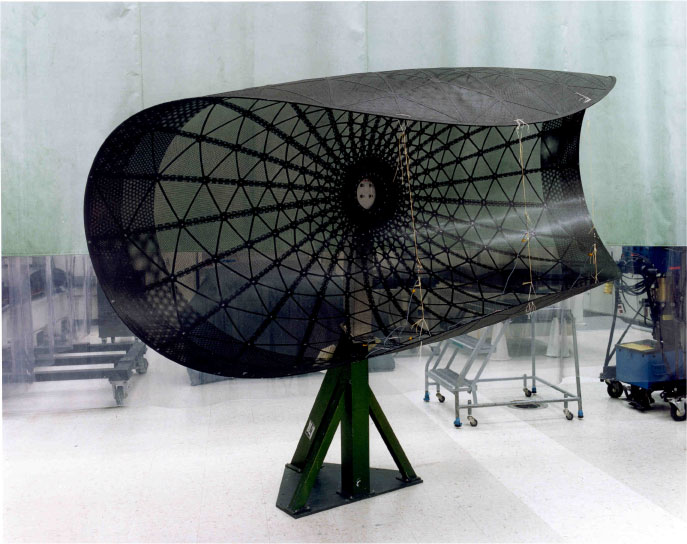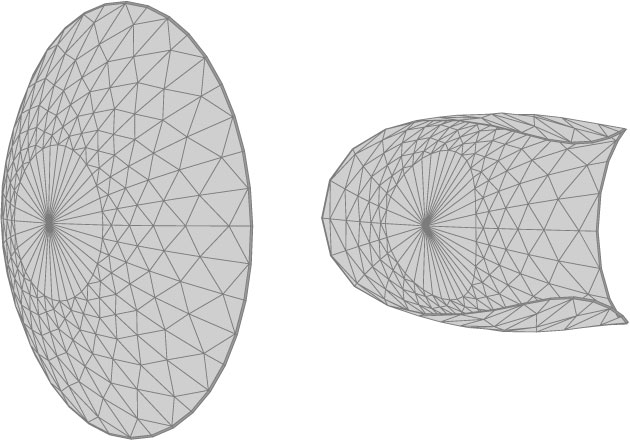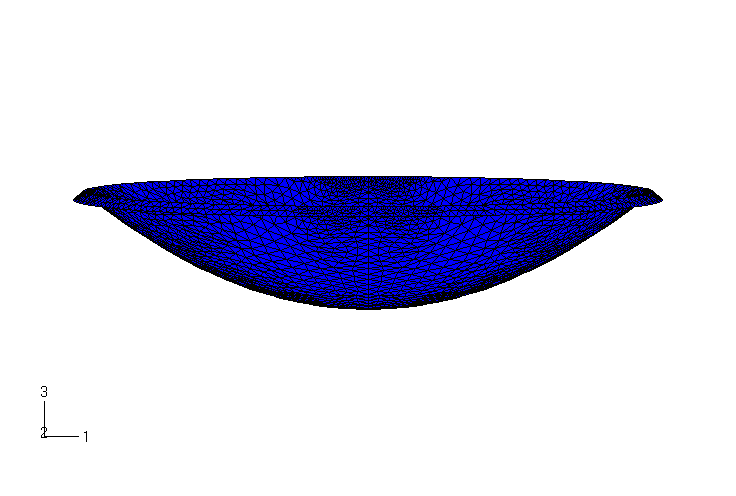![[Deployable Structures Lab]](dsl.gif)

Figure 1: Photo of packaged Hughes Spring Back Reflector
Spring back reflectors need to have low stiffness in order to be foldable, but their low stiffness makes it difficult for them to achieve and retain high shape accuracy. Furthermore, shape distortions that occur during the manufacturing of thin graphite structures, of order D/1000 in the present case, make it even more difficult to meet the stringent shape accuracy requirements imposed on communications antennas. This is a significant problem, and potentially a severe limitation on the applicability of spring back reflectors. The surface of the reflector can be adjusted with relatively simple mechanical devices, but this defies the simplicity of the concept and reduces the reliability of the complete system.

Figure 2: Schematic of deployed and packaged shape of Hughes Spring
Back Reflector
We propose a modification of the original spring back reflector concept, based on the idea of adding a thin walled stiffening element around the edge of the dish ( Figure3) . This element significantly increases the overall stiffness of the dish in the deployed configuration. One subtlety which is included in this concept is the fact that the stiffening element is only attached to the edge of the dish at certain lengths hence its configuration is such that the stiffened dish can still be folded elastically. Please follow this link for further details IASS conference paper. The result is a system for which the stiffness can be tuned to suit one's needs.
